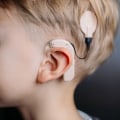If you or your child is struggling with speech problems, you may be wondering how long speech therapy usually lasts. The answer to this question depends on a variety of factors, including the severity of the speech problem, the type of therapy being used, and the frequency and intensity of the sessions. In this article, we'll explore these factors in more detail and provide some tips for maximizing the success of remote speech therapy. Research has shown that it typically takes 15 to 20 hours to correct a difference in speech (Jacoby et al, 200), and the typical frequency for joint treatment is twice a week for 30-minute sessions (ASHA 200). Based on this information, it could be assumed that if the disorder were mild to moderate, if the child attended treatment on a consistent basis, and families did their homework between sessions, the total duration of treatment could be about four to five months.
However, the actual treatment time will also depend on the number of sound errors that are being addressed in the treatment plan. The more sounds that are wrong, the longer the treatment lasts. It is important to establish a working relationship with your child's Speech-Language Pathologist (SLP) and develop a routine. After that time, the therapist should inform you of the high-priority objectives and give you instructions on how you can help and reinforce the progress achieved in the sessions. When you maximize the success of remote speech therapy for your child, you have a better chance of helping to maintain your child's motivation. The better you understand these factors, the better you can manage your expectations about the duration of your child's speech teletherapy.
Speech & Occupational Therapy of North Texas believes that partnership with families is a fundamental part of treatment. Learning, attention, behavior) would make speech therapy a long-term proposition in most cases. However, in general, the more severe the speech problem, the more therapy you are likely to need. First of all, you should be clear about your child's main speech or language problem. Then consult with your therapist about their specific experience with this particular challenge.
To review the research, ASHA (American Speech, Language and Hearing Association) defined intensity as the amount of time spent on each treatment session, frequency as the number of treatment sessions over a given period of time (usually one week) and duration as the duration of treatment received (regardless of whether the child attended treatment for two or six months).The SLP must provide specific objectives for practice with objectives of motor speech or articulation therapy. Personally, I have seen children with a lot of speech-related goals, with additional behavioral problems, make rapid progress on those goals and be discharged from services. When working with a language processing problem, one therapist can teach strategies to improve the problem while another focuses on finding a cure. I recently spoke with owners of “Speedy Speech” which is another program for shorter individual speaking sessions. The way these therapists did it was to go to the classroom and take the child that was right outside into the hallway, do the therapy quickly and send him back to class. In conclusion, it's important to remember that every case is different and there is no one-size-fits-all answer when it comes to how long speech therapy lasts.
The best advice is to practice what your therapist has taught you and work together with them to maximize your success.







